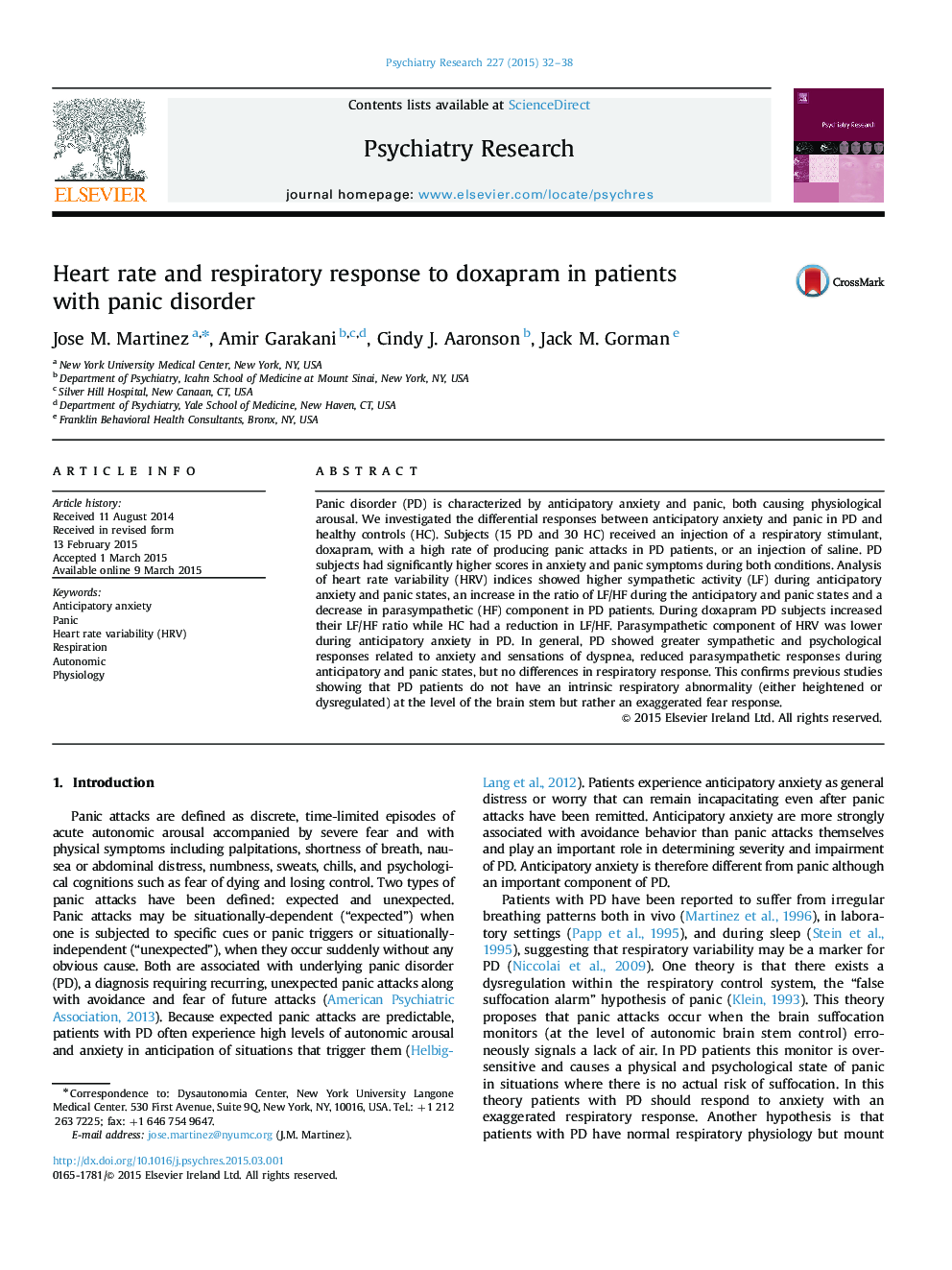| Article ID | Journal | Published Year | Pages | File Type |
|---|---|---|---|---|
| 331903 | Psychiatry Research | 2015 | 7 Pages |
•We investigated physiological and behavioral responses between anticipatory and panic states.•We found in our analysis of spectral heart rate components that panic disorder subjects had decreased high frequency component of heart rate compared to healthy controls.•We found panic disorder subjects to have decreased heart rate variability compared to healthy controls.•We found an increase in LF/HF ratio in panic disorder subjects compared to healthy controls which was highest in panic disorder subjects during the anticipatory anxiety state.•Both panic disorder and healthy controls had decreased parasympathetic activity (lower HF) during the anticipatory anxiety state period.
Panic disorder (PD) is characterized by anticipatory anxiety and panic, both causing physiological arousal. We investigated the differential responses between anticipatory anxiety and panic in PD and healthy controls (HC). Subjects (15 PD and 30 HC) received an injection of a respiratory stimulant, doxapram, with a high rate of producing panic attacks in PD patients, or an injection of saline. PD subjects had significantly higher scores in anxiety and panic symptoms during both conditions. Analysis of heart rate variability (HRV) indices showed higher sympathetic activity (LF) during anticipatory anxiety and panic states, an increase in the ratio of LF/HF during the anticipatory and panic states and a decrease in parasympathetic (HF) component in PD patients. During doxapram PD subjects increased their LF/HF ratio while HC had a reduction in LF/HF. Parasympathetic component of HRV was lower during anticipatory anxiety in PD. In general, PD showed greater sympathetic and psychological responses related to anxiety and sensations of dyspnea, reduced parasympathetic responses during anticipatory and panic states, but no differences in respiratory response. This confirms previous studies showing that PD patients do not have an intrinsic respiratory abnormality (either heightened or dysregulated) at the level of the brain stem but rather an exaggerated fear response.
